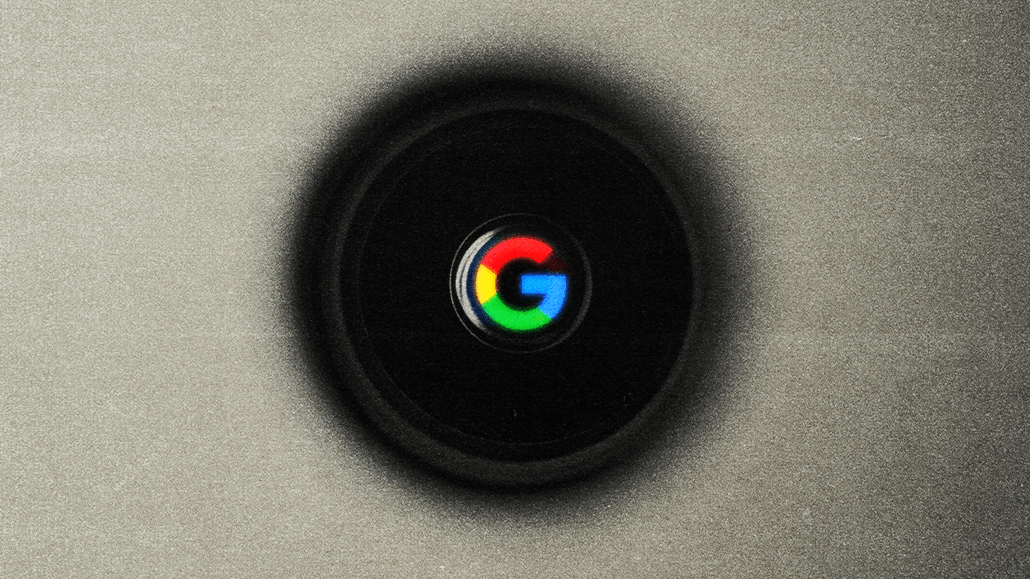DOJ vs. Google: The arguments for and against the defendant’s (alleged) ad market monopoly

Do you have thoughts on the trial? Consider taking our survey.
Google and the Justice Department are poised to lock horns in an era-defining antitrust case that’s been 15 years in the making. The outcome will profoundly impact the 300,000-plus workers in the U.S. advertising sector, plus countless more globally.
And yes, that includes you; below are some key legal and technical arguments that will be debated in a courtroom, overseen by Judge Leonie Brinkema, in the coming weeks. These arguments will decide your future during the next four to six weeks.
The DOJ’s antitrust case against Google, filed in January 2023, focuses on its tech operations. It alleges monopolistic practices that harm competition in the $600 billion online digital advertising sector.
1. Control over the ad tech stack
The DOJ alleges that Google maintains monopolistic control over the entire online display advertising sector, using an ad tech stack equipped with tools used by advertisers, publishers and third-party ad tech companies, such as ad exchanges, etc.
Per its arguments, this control stifles competition, as Google’s dominance forces advertisers and publishers to use products, such as its ad server, that impact ad prices, and ultimately result in consumer harm.
The DOJ claims Google’s role as a broker, auctioneer, and participant in ad auctions — via its specific tools in Google Ad Manager (GAM), that are commonly known as “DFP,” “AdX,” and “DBM” by industry aficionados. This scenario leads to conflicts of interest, enabling it to favor its services at the expense of rivals.
In trial documentation, the DOJ notes how smaller players in the publisher ad server market, such as Kevel, OpenX and Xandr (née AppNexus) have had to effectively exit the market because DFP had better access to Google demand. “Even technology giants like Meta have been unable to gain scale to compete with Google’s publisher ad server [DFP],” according to the filing, citing DFP as a “barrier to entry.”
In its assessment, the DOJ claims this results in less innovation, reduced choices for advertisers and publishers, and inflated costs for consumers. Google’s defense team would (of course) differ in its assessment and could argue that the U.S. government’s market definition is gerrymandered with a myopic focus on display advertising.
Instead, Google’s defense team is likely to raise attention to the broader advertising ecosystem, especially emerging sectors such as CTV or retail media/commerce media, where similar household names such as Amazon, Meta, and Netflix (to name but a few) have emerged as rivals for media spending in recent years.
In the coming weeks, observers will likely hear how the DOJ’s arguments are stuck in a world that is pre-smartphone, pre-social media, and pre-streaming or that the concept of “open web display advertising” was invented by the government for the purposes of the case, and simply no longer a thing.
2. Anticompetitive acquisitions
The government accuses Google of acquiring competitors to maintain this dominance, with the DOJ’s documentation citing how it systematically acquired companies such as DoubleClick (2008) and AdMeld (2011), which were crucial in shaping its dominance in the digital advertising space.
In Digiday’s 2023 series, an Oral History of Ad Tech, former DoubleClick (and subsequently Google) executive Ari Papro claimed the launch of DoubleClick’s ad exchange played a key part in the $3.1 billion purchase, albeit rival Big Tech names of the day were making similar moves.
These acquisitions allowed Google to integrate vertically across the ad stack, controlling key parts of the ecosystem from demand-side platforms (DSPs) to publisher-facing ad servers.
Per the DOJ’s filings, “The acquisition provided Google with a pool of captive publishers that now had fewer alternatives and faced substantial switching costs associated with changing to another publisher ad server.”
The DOJ claims these moves were intended to neutralize threats from innovative competitors and protect Google’s ability to collect vast amounts of data, which further entrenched its market power.
Acording to the DOJ, these acquisitions distorted competition and limited consumer choice in the digital advertising landscape, but that’s not the only way of looking at things. Google’s defense team is likely to point to how acquiring such assets enabled it to construct a more efficient ecosystem that benefits multiple parties on each side of a media transaction.
Additionally, the defense team is likely to point out that Google’s consolidated offering offers consumers better data security, per its own assessment.
3. Exclusionary tactics
Elsewhere in the filings, Google is also accused of employing exclusionary tactics to hinder competitors’ growth, but the defendant is likely to point to how its tools are interoperable with rival ad tech. The DOJ asserts that Google used its dominant position to limit the interoperability of its ad tools with rival systems, making it difficult for advertisers and publishers to use third-party ad tech solutions. By controlling access to valuable ad data and limiting rivals’ ability to serve ads on its platforms, Google allegedly forced many in the industry to depend on its services.
According to items admitted into evidence in the case, “Google has configured the ad server to work in a more integrated manner with its own ad exchange AdX… this has the unintended effect of preventing, technologically, the creation of a trnly [sic] open RTB marketplace with 3rd party [sic] exchanges.”
Such practice reduced transparency in the ad-buying process and restricted alternatives for advertisers, leading to higher ad prices, according to Google’s accusers, who would add such conduct has blocked innovation from smaller competitors who couldn’t gain a foothold.
Albeit, Google contends that the cost of ads is reducing — as evidenced by the serial revenue declines produced by its Google Network business, a business unit widely recognized to represent the entity formerly known as DoubleClick — as further evidence of a robust ad tech market.
4. Self-preferencing in ad auctions
The DOJ contends that Google unfairly preferences its own ad exchange in auctions, disadvantaging rival exchanges and advertisers, and it’s in this passage of debate, where the court will hear some of the most esoteric ad tech terms in existence: “header bidding.”
By manipulating ad auctions, Google allegedly steers business toward its ad exchange at the expense of competing exchanges through its (alleged) earlier “first look” and “last look” advantage. This self-preferencing practice distorts auction outcomes, leading to higher prices for advertisers and reduced revenue for publishers. It resulted in rivals introducing a workaround: the aforementioned “header bidding.”
According to the DOJ, Google subsequently moved to hamstring the rise of header bidding with the 2019 adjustment to how it aucitoned-off ad inventory. In this regard, Google’s unilateral decision-making harmed the overall digital advertising ecosystem by creating an uneven playing field that stifled competition and innovation.
In this passage of proceedings, those paying attention are also likely to be treated to some of the more obscure names of Google projects, with names such as “Project Bernanke” and “Jedi Blue” to be debated in court.
Albeit, Google’s defense team is likely to argue that “ad tech hacks” such as header bidding bloated the consumer experience with the number of ad calls it involved, thus further decreasing the security of consumer data.
Additionally, Google is likely to maintain that dynamic pricing in the online advertising market helps monetize otherwise remnant inventory — that would otherwise be unsold — and that comparisons to two-sided markets where there is “an intrinsic value” (or standard price) of a commodity are not apt.
5. Data dominance
Finally, the DOJ alleges that Google’s control over vast amounts of user data gives it an unfair advantage in digital advertising, as argued in the separate case of the DOJ vs. Google, where the defendant’s arguments were lost.
By collecting data across its multiple services — search, YouTube, Android, and more — Google can offer superior targeting for advertisers, which rivals cannot match. This data dominance reinforces its monopoly, as competitors are unable to compete on a level playing field without access to similar data sets.
The DOJ argues that this data asymmetry distorts competition, preventing rivals from delivering effective advertising solutions. Google’s dominant position in data collection also raises privacy concerns, as the DOJ claims it can exploit user information without meaningful accountability, further entrenching its position.
Similar arguments were made in the earlier DOJ successful case making allegations against Google’s search ad business — it’s worth pointing out that the defendant plans to appeal this ruling — but what’s clear is that the fate of the ad industries likely to be decided in a courtroom in the Eastern District of Virginia in the coming weeks.
More in Media Buying

Ad Tech Briefing: Big Tech won 2025 (even when it lost)
How AI, commerce media and scale reshaped ad tech in 2025 to the benefit of Big Tech.

How brands shifted marketing and media strategies through year of tariffs
Marketers share how they navigated the maze of tariffs and regulatory changes this year.

Media Buying Briefing: Omnicom Media execs begin their pitch outreach ahead of an expected new-business glut
Omnicom’s acquisition of IPG is only a few weeks old, but its combined offer to the market will soon be put to the test as it meets with consultants.











